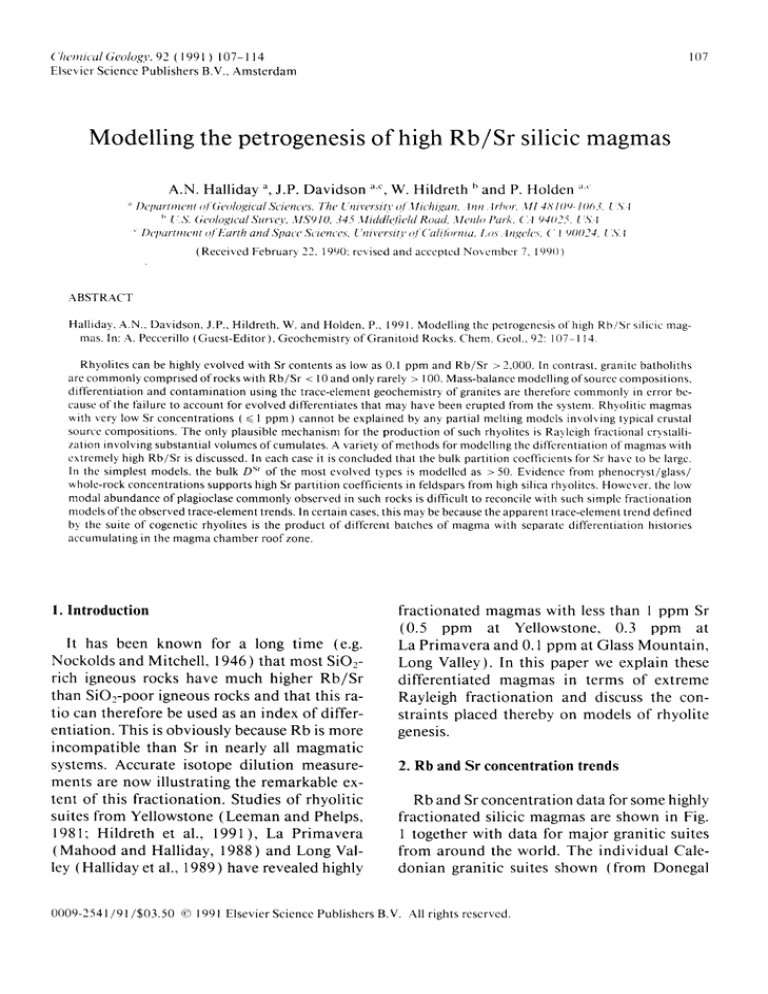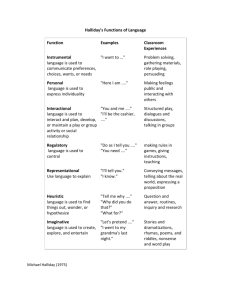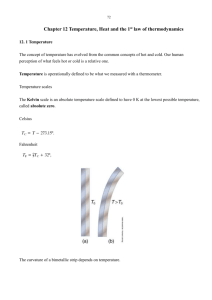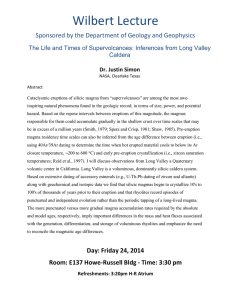
( "heroical Geology, 92 ( 199 [ ) 107-114
Elsevier Science Publishers B.V., A m s t e r d a m
107
Modelling the petrogenesis of high Rb/Sr silicic magmas
A.N. Halliday a, j.p. Davidson ~"",W. Hildreth b and P. Holden ~"~
~' D~7~arll~tepll q t Geo/o~ica/ Sciences, The University q/,llichi~an, Inn. lrhor, UI 4S I ()~- I 0~ 3, (.S'I
" ('S. Geological SI,'rVE')',MSglO, 345 )diddlefiehl Road, Menlo t'ark. (;,1 94025. ( ,S\-I
" D~7~artment o/Earlh and Space Sciences, ~ )zivetwitr q/('alih;rnta. Los ..t n£,eh'~. (' I 90024, ~ ',S'.I
(Received February 22, 1990: revised and accepted November 7, 1991))
ABSTRACT
Halliday, A.N., Davidson, J.P., Hildreth, W. and Holden, P., 1991. Modelling the petrogenesis o1 high Rh/Sr silicic magmas. In: A. Peccerillo (Guest-Editor), Geochemistry of Granitoid Rocks. Chem. Geol., 92: 107-114.
Rhyolites can be highly evolved with Sr contents as low as 0.1 ppm and Rb/Sr > 2,0(t0. In contrast, granite batholiths
are commonly comprised of rocks with Rb/Sr < l 0 and only rarely > 100. Mass-balance modelling of source compositions,
differentiation and contamination using the trace-element geochemistry of granites are therefi)re commonly in error because of the failure to account for evolved differentiates that may have been erupted from the system. Rhyolitic magmas
with very low Sr concentrations ( ~< 1 ppm ) cannot be explained by any partial melting models involving typical crustal
source compositions. The only plausible mechanism for the production of such rhyolites is Rayleigh fiactional crystallizalion involving substantial volumes of cumulates. A variety of methods ['or modelling the differentiation of magmas with
extremely high Rb/Sr is discussed. In each case it is concluded that the bulk partition coefficients for Sr have to be largc.
In the simplest models, the bulk D sr of the most evolved types is modelled as > 50. Evidence from phenocryst/glass/
whole-rock concentrations supports high Sr partition coefficients in feldspars from high silica rhyolites. However, the low
modal abundance of plagioclase commonly observed in such rocks is difficult to reconcile with such simple fractionation
models of the observed trace-element trends. In certain cases, this may be because the apparent trace-element trend defined
by the suite of cogenelic rhyolites is the product of different batches of magma with separate differentiation histories
accumulating in the magma chamber roof zone.
1. Introduction
It has been known for a long time (e.g.
Nockolds and Mitchell, 1946) that most SiO2rich igneous rocks have m u c h higher R b / S r
than SiO2-poor igneous rocks and that this ratio can therefore be used as an index of differentiation. This is obviously because Rb is more
incompatible than Sr in nearly all magmatic
systems. Accurate isotope dilution measurements are now illustrating the remarkable extent of this fractionation. Studies of rhyolitic
suites from Yellowstone ( L e e m a n and Phelps,
1981, Hildreth et al., 1991 ), La Primavera
( M a h o o d and Halliday, 1988 ) and Long Valley (Halliday et al., 1989) have revealed highly
0009-2541/91/$03.50
fractionated magmas with less than 1 ppm Sr
(0.5 ppm at Yellowstone, 0.3 ppm at
La Primavera and 0.1 ppm at Glass Mountain,
Long Valley). In this paper we explain these
differentiated magmas in terms of extreme
Rayleigh fractionation and discuss the constraints placed thereby on models of rhyolite
genesis.
2. Rb and Sr concentration trends
Rb and Sr concentration data for some highly
fractionated silicic magmas are shown in Fig.
1 together with data for major granitic suites
from around the world. The individual Caledonian granitic suites shown (from Donegal
¢~ 1991 Elsevier Science Publishers B.V. All rights reserved.
108
+~.N. [ I H
....
Glass Mountain
Rhyolites
~
Yellowstone
Rhyolites
.....
~
/
,Trawenagh
Pluton
I ('~
Bay
~
Rosses Complex
"G4
P9
~
,,'<
~,~
e-"v
E
/
'
La P r i m a v e r e
Rhyolites
Bishop
Tuff
Peru
,
- ~
Coastal
PI"
'k
I0 -~'
,
i Mmnettes
,
Yei owstone
Basalt
;,/[~
/
',,
Kosciousko
BatholHh
ly~'-^e
A::)
El2
i
"~-...:~.."X ~New
,
~.~Brunswick
'\
~
Batholith
ch
ET-\L.
Main
Donegal
~
"
°n 2,.e,
I O0 -
LII)AY
~ /~fi
~ln 5
'
~,''
©
"~
'
Ranges
'/
I
,,. a Primaver~j
I B,)S<] It
i
~-'~
1.0
C~l
lO
:*
,H ,
16Sr
ido
"
'
-t ,
i
I000
p pm
Fig. 1. Rb vs, Sr for rhyolites and associated basalts from western North America ( Halliday et al., 1984, 1989: Mahood
and Halliday, 1988; Hildreth et el., 1991 ), and granitic suites from around the world (Halliday, unpublished data on
Donegal; Hine et el., 1978: Bachinski and Scott, 1979; Atherton et al., 1979: Bateman and Chappell, 1979; Halliday el al.,
1980: DePaolo, 1981 b ). The data for Rosses (Donegal) are divided into separate phases ES (early sheets ) and G l to ~;4.
HI Sr concentrations < 50 ppm determined by isotope dilution.
and S. Scotland) were selected specifically for
their relatively simple quasi-linear trends when
plotted in this manner. Certain key points can
be made from examination of this diagram.
(1) In general, the rhyolite suites contain
highly fractionated magmas not normally included in our granite sampling. There is therefore a need for detailed studies of the relationship between what are c o m m o n l y seen as late
stage differentiates (aplites and leucogranite
minor intrusives) on the one hand and granite
pluton geochemistry on the other. These minor intrusives are c o m m o n l y regarded as esoteric and a minor aspect of the overall story.
]'hey are, in fact, possibly of fundamental importance to our understanding of the genesis of
granite batholiths. Trying to mass balance
crustal contamination, melt compositions and
differentiation in granites using bulk geochemistry is of limited value without this information. Most large-volume high-level plutons may
be accumulative relative to the once associated, now lost, cogenetic volcanics.
(2) In plagioclase-free differentiation in
which Rb and Sr are both incompatible, a positive slope should result in Fig. 1 (e.g., the New
Brunswick minettes). These conditions would
be met in the lower crust or upper mantle at
pressure-temperature conditions exceeding the
stability of plagioclase. In basaltic systems Sr
is depleted (in response to plagioclase fractionation a n d / o r crustal assimilation) as Rb
increases, corresponding to a more or less vertical trend of data on Fig. I (e.g., the Yellowstone basalts). In systems in which Sr depletion is more marked ( m a n y granites and
rhyolites, for example), a negative trend is anticipated in Fig. 1. A cogenetic suite of compositions evolving from marie to felsic would
therefore be expected to display some kind of
an inverted "L" or recumbent "V" shape on
this diagram, which is seldom (if ever) observed in perfection, but is possibly the reason
for the less perfect inverted "L" shapes of the
Peru Coastal Batholith and the Kosciusko
Batholith I-types (Lachlan foldbelt ). The trend
in Fig. 1 will be horizontal if bulk D R[' ~- 1 or if
D sr 2>> D Rb. The former is only likely in assem-
M()DELLING THE PETROGENESISOF HIGH Rb/Sr SILICIC MAGMAS
blages fractionating large amounts of biotite
(Hanson, 1978 ). Many evolved granites such
as the Trawenagh Bay pluton, Donegal (Fig.
1) have clearly undergone extensive K-feldspar fractionation, as judged by their very high
Rb/Sr, Rb/Ba, and Rb concentrations indicative of bulk D R b < 1, bulk DS~>l and bulk
DU~'> 1.
( 3 ) The fact that quasi-linear negative trends
are observed in Fig. 1 for "evolved" granites
and rhyolites, suggests that there is some simple relationship between the change in Rb and
Sr in the magma. It will be shown below that
this is indeed explicable with a manipulation
of the Rayleigh fractionation equation.
We can take several approaches to the question of how evolved silicic magmas such as
those of Long Valley (with more than three orders of magnitude variation in Rb/Sr ratio) are
produced. In so doing we are also attempting
to place limited constraints on what kind of
parent magmas were involved in the genesis of
these volcanic rocks, although from the outset
we would admit our prejudice that many of the
parent magmas were complex mixtures of
mantle- and crust-derived components with an
overall intermediate to silicic composition
(A.N. Halliday in Leake et al., 1980; Halliday
et al., 1980; DePaolo, 1981a, b; Hildreth, 1981;
Huppert and Sparks, 1988). Isotopic studies
prove that some of the arrays shown in Fig. 1
are not simply the result of Rayleigh fractionation. Processes such as crustal contamination
can also play a role. Note that contamination
cannot be responsible for the very low observed Sr concentrations. In fact, exceedingly
low Sr concentrations in a rhyolite are inconsistent with post-fractionation crustal contamination (Halliday et al., 1989 ).
In this paper we evaluate and place limits
upon the potential importance of Rayleigh
crystal fractionation. High R b / S r ratios in
some alkaline rocks have been explained in
terms of sub-solidus fluid-rock interaction
(Bonin et al., 1979 ). However, this is of little
relevance to the (mostly glassy) fresh volcanic
109
rocks with
concerned.
which
this
paper
is
mainly
3. Partial melting vs. fractional crystallization
Trace-element behavior as a result of silicate-melt equilibria is described in a number
of familiar equations (e.g., Shaw, 1970; Arth,
1976 ). Partial melting is generally modelled by
an equilibrium batch melting equation such as:
C'/C~,=I/(F + D ' - F D ' )
(1)
whereas fractional crystallization is described
by the Rayleigh equation:
(C'/C[,)=F
')'
(2)
'
(in which C ' = concentration of element i in the
liquid, C~,=concentration of element i in the
starting mineral-melt assemblage, F = fraction
of liquid). If the bulk crystal/liquid distribution coefficient (D) is greater than unity, the
trace element (i) is depleted much more rapidly during crystal fractionation than in melting (Fig. 2). Even assuming a high Ds', it is
almost impossible to achieve low Sr concentrations (and correspondingly high R b / S r )
through equilibrium partial melting. This is
true whether modal or non-modal melting
equations are considered (as F approaches
zero, C'/C~, approaches 1/D'). Large deple5 0 0 as ~ o2
I
~r } s2
i
4oo~' aS' ~i
L
,2-'
,g"
'
E , 3 0 0 ~- i "fractional crystallization
/
'1,
©
/ '
,@"
C~R~:
,b ppm
],
.....
]
I
I
t
l
. ,
: 2
_
par tia~ melting
to
,oot
o
,
20
40
60
Sr
80
Ioo
ppm
Fig. 2. Model Rb vs. Sr c o n c e n t r a t i o n s expected as a result of differing degrees of partial melting as opposed to
Rayleigh fractional crystallization for the same parent
composition.
I I0
A.N. I | A I ] A I ) A Y ET AL.
tions in Sr could be achieved if an extreme
fractional melting model were used, but the
physical plausibility of separating infinitesimally small fractions of rhyolitic liquid from a
crystalline source is at best questionable (Arzi,
1978; McKenzie, 1985; Wickham, 1987). We
are then drawn to the conclusion that the only
closed system model capable of generating the
Rb-Sr characteristics of highly evolved rhyolites is fractional crystallization (Halliday,
1990 ). Furthermore, the existence of high R b /
Sr rhyolites can be taken as evidence for a significant crustal magma chamber at the time of
eruption. Many precaldera rhyolites with low
Sr concentrations are therefore likely to reflect
the presence of a large magma system, rather
than small pockets of unrelated melt (cf. Bacon et al., 1981; Metz and Mahood, 1985;
Huppert and Sparks, 1988; Sparks et al., 1990 ).
rium conditions between minerals and melts.
For instance, the distribution coefficient for Sr
between plagioclase and basaltic melt may be
very much less than that between plagioclase
and silicic melt (e.g., Korringa and Noble,
1971; Arth, 1976; Hanson, 1978). It has been
shown that the mineral/melt distribution
coefficients for most elements and minerals increase as the melt becomes more silicic and
more polymerized and the concentration of the
element becomes very low (Leeman and
Phelps, 1981; Mahood and Hildreth, 1983:
Watson, 1985). The effective distribution
coefficient would therefore be more realistically represented by an integration of D s' over
the range ofF. Extremely high Ko-values for Sr
in sanidine have been reported (Leeman and
Phelps, 1981; Halliday et al., 1989 ), and below
we present further evidence that high bulk D
for Sr is required by a simple Rayleigh model.
4. Rayleigh fractional crystallization
To achieve three orders of magnitude variation in Sr concentration in a rhyolite system
such as the Long Valley caldera or the basaltrhyolite system of La Primavera by fractional
crystallization alone reduces eq. 2 to:
DSr= ( - 3 / l o g F ) + 1
(3)
This requires a bulk D sr of 2.5 for an F of
0.01. This translates into thousands of cubic
kilometers of cumulates for such systems (i.e.,
approximately 100 times the volume of erupted
rhyolite ). The calculated volume of cumulates
would be reduced to hundreds of cubic kilometers if the bulk D was 4. The highest mineral/melt Ko that would be suitable from the
available literature would be 3.87 for K-feldspar (Philpotts and Schnetzler, 1970) 4.5-7.3
for sanidine (Nash and Crecraft, 1985) and
5.57 for anorthoclase (Sun and Hanson, 1976 ).
These values are not very encouraging in terms
of increasing bulk D and reducing the calculated mass of cumulates. D sr will change during fractionation both due to changing mineral
assemblage and as a result of changing equilib-
5. Rayleigh fractionation and the
determination of bulk distribution coefficients
from Rb and Sr whole-rock concentrations
Another attempt to determine the bulk distribution coefficients and hence constrain a
Rayleigh fractionation crystallization model
comes from inverting the problem.
We can use the data shown in Fig. 1 to calculate bulk distribution coefficients for Rb and
Sr as follows. By taking the logarithm of eq. 2
we obtain:
logC' - logC[, = (D' - 1 ) log F
(4 )
We can therefore write:
log R b - log Rbo
= slope on Fig. 1
log S r - l o g Sr~
m Rb- 1
- n = DSr_ 1
(5)
In Fig. 3 we show an array of lines of different slope ( = n ) which follow from this relationship. The slopes that we observe in evolved
granitic (rhyolitic) systems vary from about
MODELLING THE PETROGENESIS OF HIGH Rb/Sr SILICIC MAGMAS
IIl
6. Rayleigh fractionation and the
determination of bulk distribution coefficients
from whole-rock/glass data
n= slope = (DRb-I)/(DSr-I)
I009
Knowing the concentrations of Rb and Sr in
glass separated from non-vesicular whole-rock
rhyolite, we can determine bulk distribution
coefficients provided we know the proportions
of crystalline phases. This approach does have
the disadvantage that accurate modal proportions will be difficult to determine in crystalpoor rhyolites. A simpler approach is as follows. The concentration of an element in the
bulk crystals can be expressed as:
081-
DRb 05~
04 L
03P
Cmm=(Cw-Q,)M-'
0(;
2
4
;
;
IO
i
i
12
14
i__
16
18
D sr
Fig. 3.
D Rb vs.
(O R b - l ) / ( D s t -
Ds' with slopes corresponding to
1) (equivalent to those in Fig. 1).
(6)
where
C = concentration,
min=minerals,
w r = w h o l e rock, gl=glass and M is the mass
fraction of crystals. F r o m this it follows that:
DRb-I=[Rbwr/(MRbg,)]-(I/M)
(7)
and that:
D Rb- 1 (Rbwr/Rbo) - 1
D s t - 1 - (Srwr/Sre,) - 1
- 0 . 4 (high temperature Bishop Tuff, or La
Primavera) to - 0 . 2 (Trawenagh Bay pluton )
to near zero (Glass Mountain, Long Valley).
From Fig. 3 we can see that these shallow slopes
require a bulk D for Sr that is about 2.5 or
greater provided D Rb is a r o u n d 0.2. This value
will not change greatly in silicic melts in which
Rb is relatively concentrated (Hanson, 1978;
Mahood and Hildreth, 1983; Watson, 1985).
Since sanidine is almost certainly the most important phase to control bulk D in rhyolitic liquids, bulk D Rb must be less than 0.5 (probably
0. l ). Rhyolitic suites such as Glass Mountain
with a very gentle negative slope on Fig. 1 can
clearly only be produced by Rayleigh fractionation if bulk D s' is extremely high. For example, if D Rb < 0 . 5 , then D sr > 50! Such high values are virtually impossible on the basis of
observed assemblages. In nearly all high silica
rhyolites, sanidine and quartz greatly exceed
plagioclase in modal abundance.
(8)
which is the same as the slope (n) in Figs. 2
and 3 and eq. 5. Whole rock and glass concentrations of Rb and Sr have been measured by
isotope dilution for two samples at Glass
Mountain (Halliday et al., 1989) and for this
we determine values of n of - 0 . 0 1 2 2 and
- 0 . 3 9 7 for glasses with 0.13 and 2.3 ppm Sr,
respectively. The bulk D sr required by the first
value o f n (Fig. 3) is about 50, given D Rb < 0 . 5 ,
confirming the conclusion based on Rayleigh
modelling of Fig. 1.
These indications of very high bulk distribution coefficients for Sr in highly evolved
rhyolite systems can be supported in part by
some direct measurements data on phenocrysts which is our final approach to the
problem.
7. Sanidine/melt partition coefficients for Sr
In Fig. 4 we show the concentration ratios of
Sr in sanidine relative to coexisting whole rock
1I2
;\.N. H A L L I I ) A Y ET A¿ .
iopoo
3,000
1,000
o
3
300
A
o
0::
LO0
o
Ju
30
"6
I0
~PA
0 Gloss
"~ Giqss Mounte,n
O-Whole Rock /
n
3
I
I
0
~lm
•
•
Z~ GLass
&-Whole
5
Bishop Tuff WhoLe Rock
I0
coefficients for Sr in sanidine (Fig. 4). Note
the apparent KD of 18 observed for one Glass
Mountain sample. In order to produce bulk Ds,of 50 as suggested by the other lines of evidence, we must also be fractionating plagioclase with even higher KD. This does not seem
unreasonable, although distribution coefficients determined from high precision isotope
dilution measurements are needed to substantiate this. We note that Nash and Crecraft
( 1985 ) record/~ur in plagioclases of 6.8 to 33.
8. Conclusions
Rock ~LO2 Primavero
15
20
(Srson/SrglQss) Or (Sr~n/Srwr)
Fig. 4. Srsa,,/Sr,~r) or Sr,an/Srglass against differentiation
index (Rb/Sr) (note log scale) for volcanicsof the Long
Valley caldera and La Primavera (Halliday et al., 1984,
1989: Mahoodand Halliday, 1988).
or glass concentrations, as a function of Rb/Sr
ratio of the whole rock or glass (a very suitable
indicator of degree of fractionation). In an
ideal situation, Sr~a./Srglass= mineral/melt Kd,
whereas Srs,n/Srwr < mineral/melt KD. Clearly,
even minor amounts of crustal contamination
of the rhyolitic liquid during eruption are likely
to provide false apparent partition coefficients. In short, trying to accurately measure
extremely low concentrations of Sr is feasible,
but the data may be suspect despite this. However, nature works in our favor in so far as the
effects observed (Halliday et al., 1984, 1989;
Mahood and Halliday, 1988; Halliday and Bacon, unpublished) suggest preferential addition of Sr to the glass. We have no reason yet
to suspect a high apparent Kd in these very
evolved compositions as being due to alteration or contamination (i.e., loss of Sr in the
glass or liquid).
Highly fractionated liquids do indeed appear to have high mineral/melt distribution
( l ) Rhyolites exhibit enormous fractionations in Rb/Sr ratios seldom reported from
granites. We conclude that our rationale for
sampling of granites as representatives of silicic magma compositions is probably flawed
and that the evolved portions of the granite
magma are lost from the system. It is therefore
crucial to examine minor intrusives as clues to
the more evolved liquid compositions. Furthermore, the notion that one should be able
to mass balance the trace-element or majorelement chemistry of granitic batholiths to determine the characteristics of the magma
source is possibly erroneous.
(2) First order trace-element modelling indicates that the evolved compositions observed in high-silica rhyolites cannot be produced realistically by crustal melting alone;
considerable differentiation of the magma is
required.
(3) Several different approaches to the
problem of generating high-silica rhyolites by
fractional crystallization of a magma with low
Rb/Sr indicate that it can only be achieved
with reasonably high bulk distribution coefficients for Sr ( > 3 ) a n d / o r large volumes of cumulates. We do not see it as unreasonable to
produce evolved rhyolitic magma by fractional crystallization of basalt on these traceelement grounds alone. In certain cases (such
as alkaline rhyolite systems) this may be a better explanation than crustal melting, as dis-
MODELLING THE PETROGENES1S OF HIGH Rb/Sr SILICIC MAGMAS
cussed by Mahood and Halliday ( 1988 ).
(4) Attempts to determine the bulk distribution coefficients for Sr in highly evolved
rhyolites yield similar information. The bulk
distribution coefficients appear to be high
( > 2 . 5 ) to very high (as high as 50 in extremely evolved liquids). Bulk distribution
coefficients this high are difficult to reconcile
with observed phenocryst assemblages which
are dominated by quartz and sanidine. A possible explanation for this is that the modelling
is in error, because DRb is higher than generally
appreciated in very evolved rhyolites. However, this is not supported by observed data.
Another possible explanation is that the shallow sloping trends for data from evolved rhyolites shown in Fig. 1 are not the product of
single-stage differentiation. Rather they are an
artefact of combining a variety of highly
evolved, genetically related, but separate differentiates, which accumulate near the roof of
the same magma chamber.
Acknowledgements
This research was supported by NSF grants
EAR-8720564 and EAR-9004133 to ANH. We
are very grateful to Gail Mahood for her thorough and useful criticism of an early version of
the text and Klaus Mezger and Gareth Davies
for discussion.
References
Arth, J.G., 1976. Behavior of trace elements during magmatte processes--a summary of theoretical models and
their applications. J. Res. U.S. Geol. Surv., 4: 41-47.
Arzi, A.A., 1978. Critical phenomena in the theology of
partially melted rocks. Tectonophysics, 44:173-184.
Atherton, M.P.. McCourt, W.J., Sanderson, L.M. and
Taylor, W.P., 1979. The geochemical character of the
segmented Peruvian Coastal Batholith and associated
volcanics. In: M.P. Atherton and J. Tarney (Editors),
Origin of Granite Batholiths--Geochemical Evidence.
Shiva, Orpington, pp. 45-64.
Bachinski, S.W. and Scott, R.B., 1979. Rare-earth and
other trace element contents and the origin ofminettes
(mica-lamprophyres). Geochim. Cosmochim. Acla,
43: 93-100.
l I3
Bacon, C.R., Macdonald, R., Smith, R i . and Baedecker,
P.R., 1981. Pleistocene high-silica rhyolites of the Coso
volcanic field, Inyo County, California. J. Geophys.
Res., 86: 10223-10241.
Bateman, P.C. and Chappell, B.W., 1979. Crystatlisation
fractionation and solidification of the Tuolumne Intrusive Series, Yosemite National Park, California.
Bull. Geol. Soc. Am., 90: 465-482.
Bonin, B., Bowdem P. and Vialette, Y., 1979. Le compartement des eldments Rb el Sr au cours des phases
de mineralisation: L'example de Ririwai (Liruei), N igeria. C. R. Acad. Sci., Paris, 89 (Ser. D): 707-710.
DePaolo, D.J., 1981 a. Trace element and isotopic effects
of combined wallrock assimilation and fractional crystallisation. Earth Planet. Sci. Lett., 53:189-202.
DePaolo, D.J., 1981b. A neodymium and strontium isotopic study of the Mesozoic calc-alkaline granitic batholiths of the Sierra Nevada and Peninsular Ranges,
California. J. Geophys. Res., 86: 10470-10488.
Halliday, A.N., 1984. Coupled Sm-Nd and U-Pb systemalics in late Caledonian granites and the basement under northern Britain. Nature (London), 307: 229-233.
Halliday, A.N., 1990. A reply to comments by R. Stephen
J. Sparks, Herbert E. Hupperl, and Colin J.N. Wilson
on "'Evidence for long residence times of rhyolitic
magma in the Long Valley magmatic system: the isotopic record in prccaldera lavas of Glass Mountain".
Earth Planet. Sci. Lett., 99: 390-394.
Halliday, A.N., Stephens, W.E. and Harmon, R.S., 1980.
Rb-Sr and O isotopic relationships in three zoned ( a ledonian granitic plutons. Southern Uplands, Scotland: evidence for varying sources and hydridisalion
of magmas. J. Geol. Soc. London, 137: 329-348.
Halliday, A.N., Fallick, A.E., Hutchinson, J. and Hildreth, W., 1984. ANd, Sr and O isotopic investigation
into the causes of chemical and isotopic zonation in
the Bishop Tuff; California. Earth Planet. Sci. Lelt., 68:
379-391.
Halliday, A.N., Mahood, G., Holden, P., Metz, J.M.,
Dempster, T.J. and Davidson, J.P., 1989. Evidence fiw
long residence times of rhyolite magma in the Long
Valley magma system; the isotopic record in the precaldera rhyolite lavas of (}lass Mountain. Earth Planet.
Sci. Lett., 94: 274-290.
Hanson, G.N., 1978. The application of trace elements to
the petrogenesis of igneous rocks of granitic composition. Earth Planet. Sci. Left.. 28: 26-43.
Hildreth, W., 1981. Gradients in silicic magma chambers:
Implications for lithospheric magmatism. J. Geophys.
Res., 86: 10153-10193.
Hildrelh, W., Halliday, A.N. and Christiansen, R i . , 1991.
Isotopic and chemical evidence concerning the genesis
and contamination of basaltic and rhyolitic magma
beneath the Yellowstone Plateau volcanic field. J. Petrol., 32: 63-138.
Hine. R., Williams, 1.S., Chappell, B.W. and White, A.J.R.,
1 14
1978. Contrasts between I- and S-type granitoids of the
Kosckiusko Batholith. J. Geol. Soc. Aust., 25: 219-234.
Huppert, H.E. and Sparks, R.S.J., 1988. The generation
of granitic magmas by intrusion of basalt into continental crust. J. Petrol., 29: 599-624.
Korringa, M.K. and Noble, D.C., 1971. Distribution of St
and Ba between natural feldspar and igneous melt.
Earth Planet. Sci. Lett., 11: 147-151.
Leake, B.E., Brown, G.C. and Halliday, A.N., 1980. The
origin of granite magmas: a discussion. J. Geol. Soc.
London, 137: 93-97.
Leeman, W.P. and Phelps, D.W., 1981. Partitioning of rare
earth and other trace elements between sanidine and
coexisting volcanic glass. J. Geophys. Res., 86:1019310199.
Mahood, G. and Halliday, A.N., 1988. The generation of
high-silica rhyolite: a Nd, Sr and O isotopic study of
Sierra LaPrimavera, Mexican Volcanic Belt. Contrib.
Mineral. Petrol., 77: 129-149.
Mahood, G. and Hildreth, W., 1983. Large partition coefficients for trace elements in high-silica rhyolites. Geochim. Cosmochim. Acta, 47:11-30.
McKenzie, D., 1985. The extraction of magma from the
crust and mantle. Earth Planet. Sci. Lett., 74:81-91.
Metz, J.M. and Mahood, G.A., 1985. Precursors to the
Bishop Tuff eruption: Glass Mountain, Long Valley,
California. J. Geophys. Res., 90:11121-1 1126.
Nash, W.P. and Crecraft, H.R., 1985. Partition coefficients for trace elements in silicic magmas. Geochim.
Cosmochim. Acta, 49: 2309-2322.
A.N. HALLIDAY ET AI,.
Nockolds, S.R. and Mitchell, R.L., 1946. The geochemistry of some Caledonian plutonic rocks: a study in the
relationship between the major and trace elements of
igneous rocks and their minerals. Trans. R. Soc. Edinburgh, 61: 533-575.
Philpotts, J.A. and Schnetzler, C.C., 1970. Phenocrystmatrix partition coefficients for K, Rb, Sr and Ba, with
applications to anorthosite and basalt genesis. Geochim. Cosmochim. Acta, 34: 307.
Shaw, D.M., 1970. Trace element fractionation during
anatexis. Geochim. Cosmochim. Acta, 34: 237-243.
Sparks, R.S.J., Huppert, H.E. and Wilson, C.J.N., 1990.
Discussion of "'Evidence for long residence times of
rhyolitic magma in the Long Valley magmatic system:
the isotopic record in precaldera lavas of Glass Mountain" by A.N. Halliday, G.A. Mahood, P. Holden, J.M.
Metz, T,J. Dempster and J.P. Davidson. Earth Planet.
Sci. Lett., 99:387-389
Sun, S.S. and Hanson, G.N., 1976. Rare earth element
evidence for differentiation of McMurdo volcanics,
Ross Island, Antarctica. Conlrib. Mineral. Petrol., 54:
139.
Watson, E.B., 1985. Henw's law behavior in simple systems and in magmas: criteria for discerning concentration-dependent partition coefficients in nature, Geochim. Cosmochim. Acta, 49: 917-923.
Wickham, S.M., 1987. The segregation and emplacement
of granitic magmas. J. Geol. Soc. London, 144: 281297.




